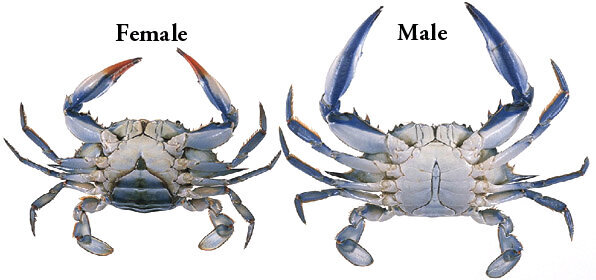Stalking The Blue Crab
TAKING A DIP - A favorite past time of the Howarth’s when family is in town, is to go blue crabbing.
Fun and Delicious
In late summer, once the water surrounding the Cape is warm enough, Blue Crab mating season begins. While not as famous as their cousin the lobster, Blue Crabs are considered a delicacy and catching them is a great family fun activity. Blue Crabs usually appear on the Sound side first but have been known to work their way into Pleasant Bay and Nauset Marsh. Any of the estuaries that feed into these areas are perfect for crabbing, and with no permit required it is one of the easiest ways to include the entire family in the fun.
The simplest method of catching Blue Crab is the “chicken neck” technique, which is simply tying a raw chicken neck to your line as bait--seriously, this works! You will need a long-handled, wide mesh dip net (available at the Goose), a commercially produced crab line with a weight or several yards of heavy twine, a few short sticks to secure your bait lines, and a five gallon bucket, preferably with a lid.
By: Phil Howarth
Start by securing your bait to the end of the weighted line. Next, drop it into the water and let it sink to the bottom. The crabs will be on your bait the moment it hits the water, so secure the other end of your line to one of the sticks to prevent the crabs from running away with it. When the crab grasps the bait with its powerful claws and begins to move away with it, gently pick up the line and begin a steady hand over hand retrieval. As the crab comes into sight, slowly raise it off the bottom and swing it towards your dip net.
Crabs are a super aggressive and tenacious predator. Be very cautious when releasing the crabs into the bucket, as they are quick to lash out and they have extremely powerful claws. Make sure to instruct any children you have with you to stay clear of the claws.
If there are a lot of crabs in the area you are fishing, you should have action until your bait runs out or you reach the legal limit of 25 crabs. Remember: any blue crabs you keep must be five inches long from spike to spike and must be male (females have distinct red tips on their claws and are easy to identify, see below). Crabs will keep well in your bucket for hours as long as they are kept out of the sun.
If there are a lot of crabs in the area you are fishing, you should have action until your bait runs out or you reach the legal limit of 25 crabs. Remember: any blue crabs you keep must be five inches long from spike to spike and must be male (females have distinct red tips on their claws and are easy to identify, see below). Crabs will keep well in your bucket for hours as long as they are kept out of the sun.
Where To Crab
The Cape’s coastline along Nantucket Sound is a prime spot for Blue Crab in the late summer. Some of the most productive spots also offer the easiest access: the Bass River Bridge in Yarmouth, Herring River Bridge in Harwich, and the Swan River Bridge in Dennis are great places to start. As stated earlier, Blue Crabs have been known to show up all the way into the Pleasant Bay and Nauset Estuaries.



